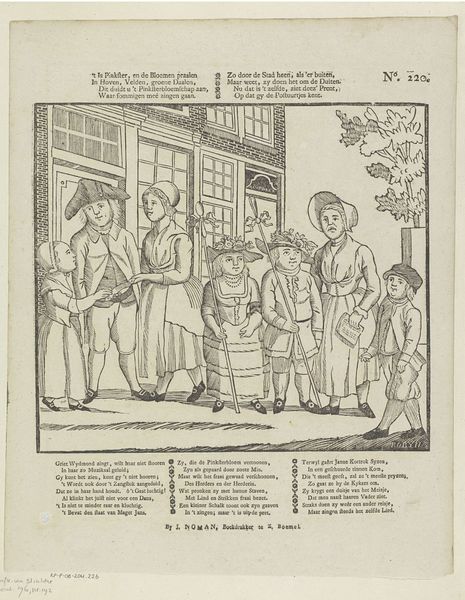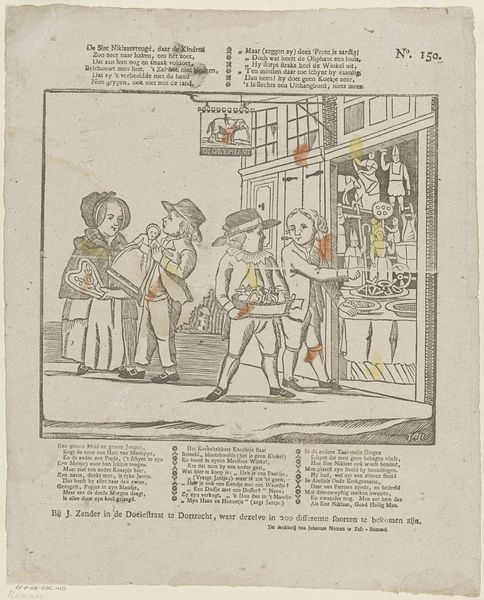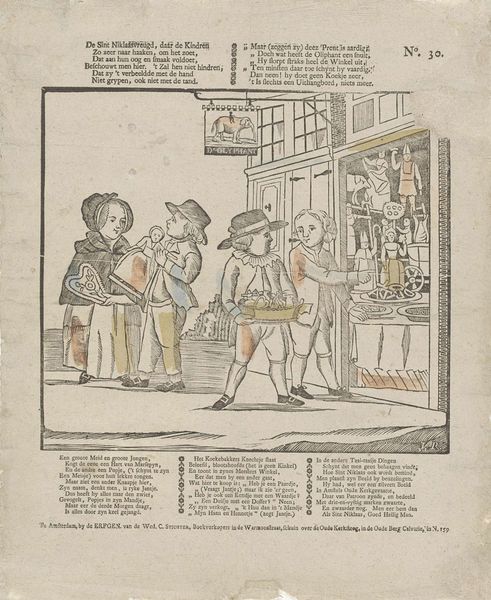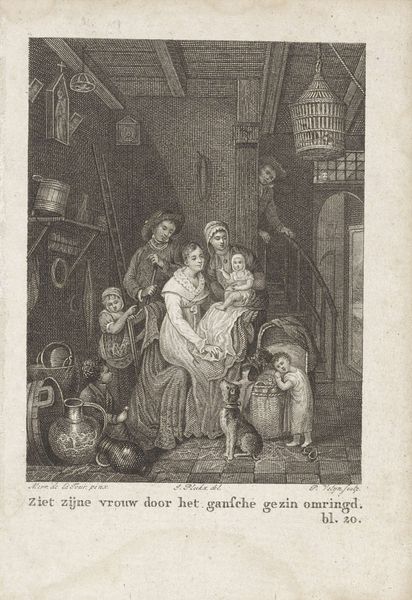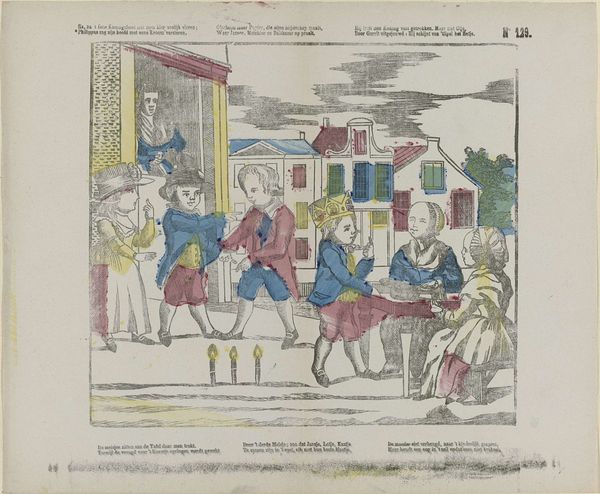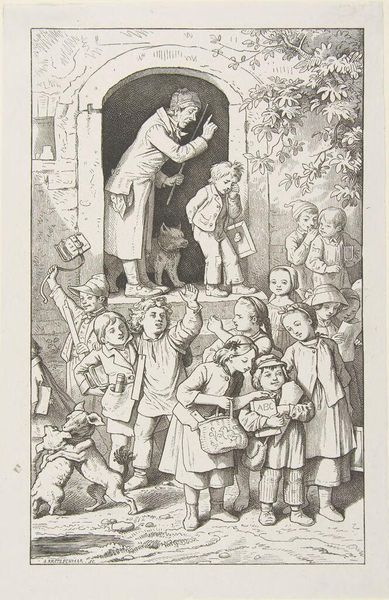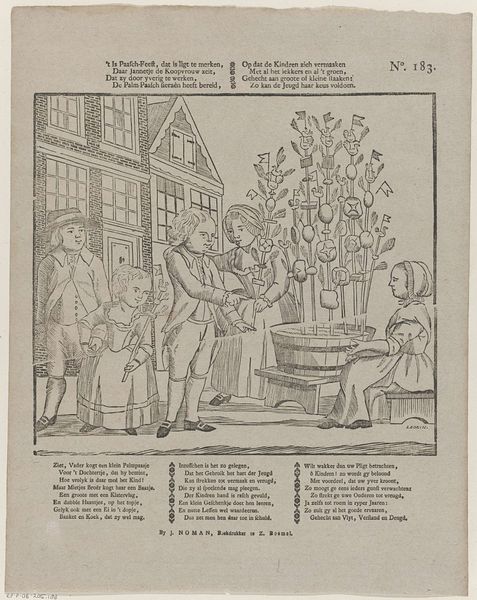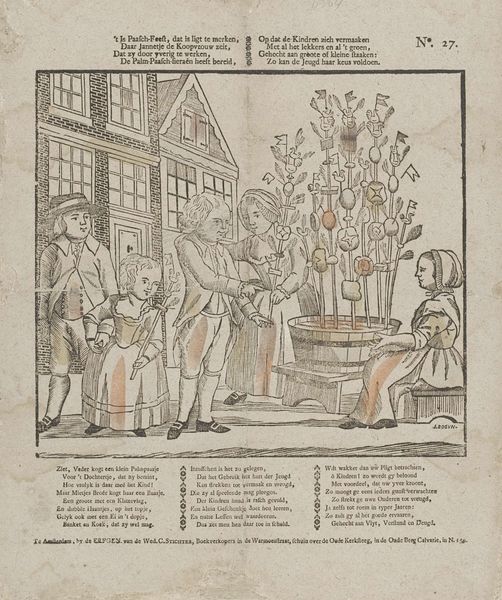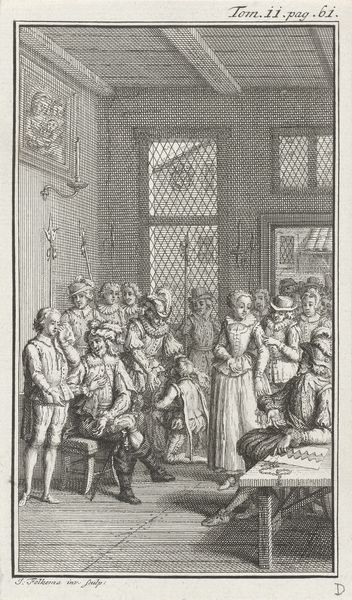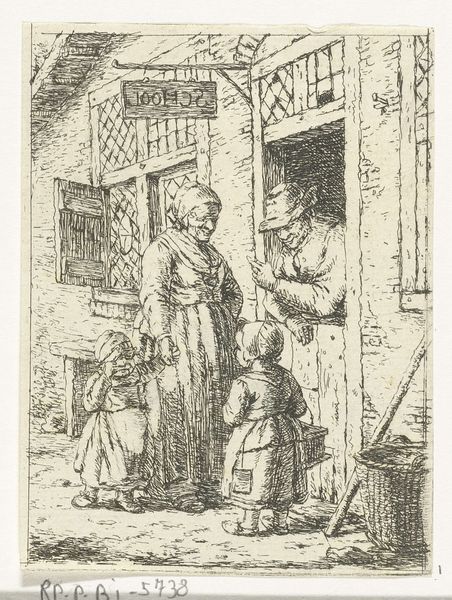!['T is Pinkster, en de bloemen praalen / in hoven, velden, groene daalen [(...)] by J. Robyn](/_next/image?url=https%3A%2F%2Fd2w8kbdekdi1gv.cloudfront.net%2FeyJidWNrZXQiOiAiYXJ0ZXJhLWltYWdlcy1idWNrZXQiLCAia2V5IjogImFydHdvcmtzL2JlMTdiNDk5LTBlZWItNGE5Yy04MTMxLWQ0ZGM2M2I4ZDUzMy9iZTE3YjQ5OS0wZWViLTRhOWMtODEzMS1kNGRjNjNiOGQ1MzNfZnVsbC5qcGciLCAiZWRpdHMiOiB7InJlc2l6ZSI6IHsid2lkdGgiOiAxOTIwLCAiaGVpZ2h0IjogMTkyMCwgImZpdCI6ICJpbnNpZGUifX19&w=3840&q=75)
'T is Pinkster, en de bloemen praalen / in hoven, velden, groene daalen [(...)] 1715 - 1813
0:00
0:00
Dimensions: height 364 mm, width 298 mm
Copyright: Rijks Museum: Open Domain
Curator: Here we have a print titled ''T is Pinkster, en de bloemen praalen / in hoven, velden, groene daalen [...],' an engraving made sometime between 1715 and 1813 by J. Robyn. It is currently held in the Rijksmuseum. What is your first take on this piece? Editor: It feels… charmingly naive. The figures are a bit stiff, and the colors, though muted, have a certain warmth. There’s an undeniably folk-art quality to it. Curator: Indeed. This print offers a fascinating glimpse into the social practices surrounding Pinkster, or Pentecost, in the Netherlands during the 18th century. As a historian, I’m drawn to how it reflects the evolving public role of celebrations and seasonal festivals. Editor: From an activist perspective, I'm interested in what this scene reveals about social class and gender roles at the time. Look at the costuming, for instance, which signifies socio-economic standing. Curator: The accompanying text does shed light on these elements. It translates roughly to "It is Pinkster, and the flowers gleam / In courts, fields, green valleys," suggesting a celebration of nature’s bounty. However, it also points to a pragmatism within the community by claiming the singers "do it for the money." Editor: That adds another layer. Are we seeing a genuine celebration or a commodified performance, where children and adults alike participate in the marketplace by peddling tunes? Curator: Perhaps both. Genre scenes such as this often walked a tightrope between idealizing rural life and acknowledging its realities. The figures almost seem caught between the formal structure of the print and the spontaneity that must have animated that specific spring day. Editor: And thinking of gender – the women's faces have this sort of weariness, like they're performing an expected role, not necessarily partaking. Is there some kind of commentary being offered about this sort of performative domesticity? Curator: It is difficult to discern a direct critical voice on that specifically. The work does hint, however, at how traditional societal roles were both celebrated and, at times, challenged through the lens of seasonal rituals. Thank you for that interpretation. Editor: Thank you for providing context, which makes it difficult to just read at surface value. It underscores art’s power to reflect, question, and potentially reshape perceptions of social life.
Comments
No comments
Be the first to comment and join the conversation on the ultimate creative platform.

